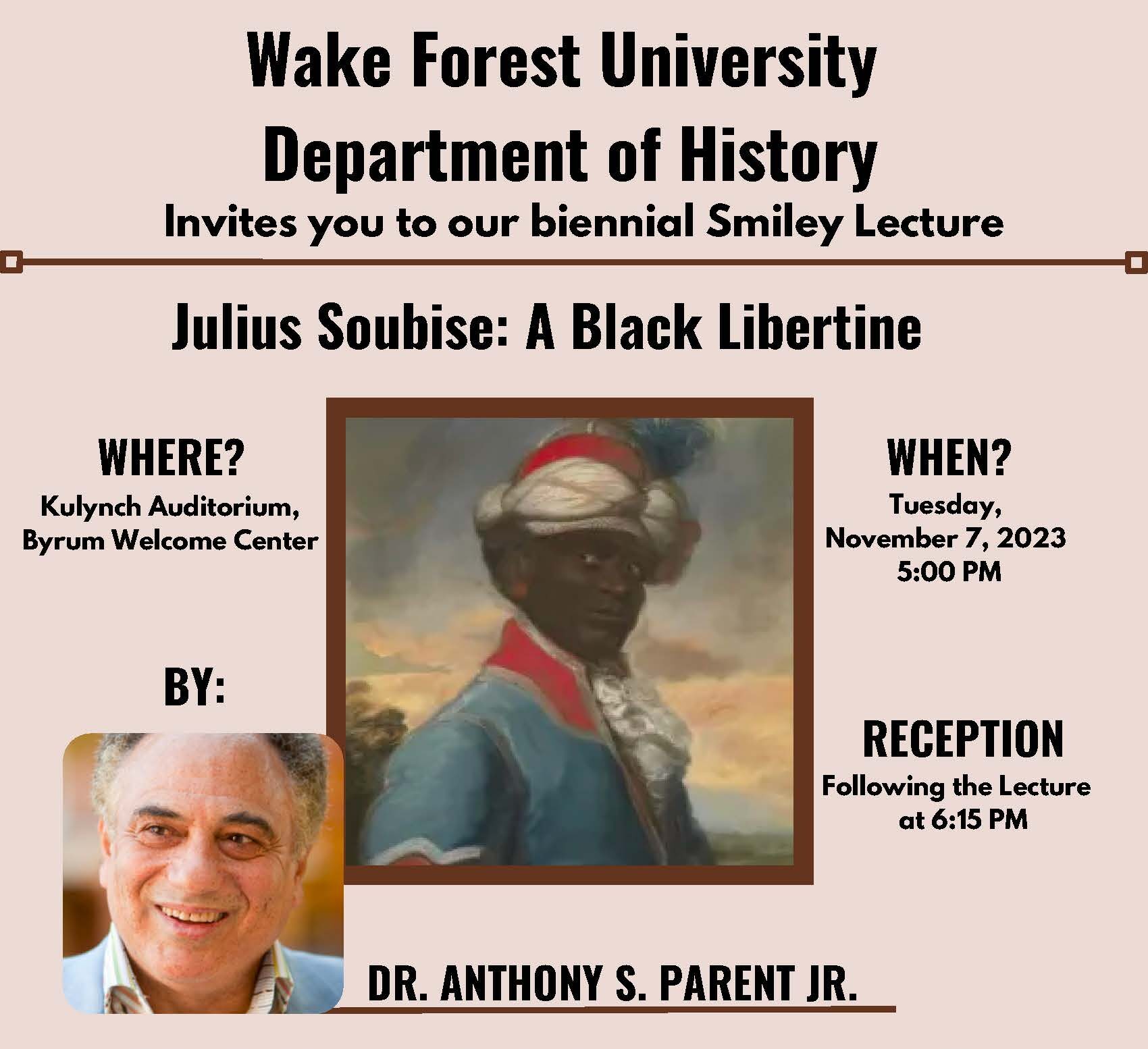2023 Smiley Lecture: Anthony S. Parent, Jr., “Julius Soubise: A Black Libertine”

The Department of History invites you to the biennial Smiley Lecture “Julius Soubise: A Black Libertine,” by Dr. Anthony S. Parent, Jr.
The free public lecture will be held on Tuesday, November 7, at 5 pm in Porter Byrum Welcome Center’s Kulynych Auditorium. A reception will follow.
About the talk: Julius Soubise was a libertine in every sense of the word, from its original meaning of liberated slave to its later iteration of “nonconformist.” Born to an enslaved mother in St. Kitts in 1745, Julius was raised by the Duchess of Queensberry to be a master fencer and horseman. Leaving London in 1777 for Calcutta, Soubise opened the “best” horse stables in India.
